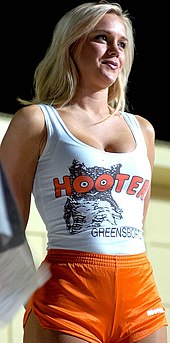
Dolphin shorts or Dolfins are a specific style of unisex shorts worn for athletics.

Dolphin shorts or Dolfins are a specific style of unisex shorts worn for athletics.
Dolphin shorts are a style of unisex shorts designed to be worn for athletics. They are typically very short and were originally made from nylon with contrasting binding, side slits, and rounded corners, with a waistband at the top—a style popular in the 1980s. [1] [2]
The name is from Dolfin, the American company that first produced this style of shorts in the 1980s. [2]
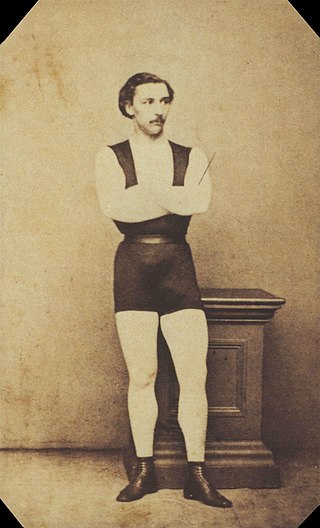
A leotard is a unisex skin-tight one-piece garment that covers the torso from the crotch to the shoulder. The garment was made famous by the French acrobatic performer Jules Léotard (1838–1870). There are sleeveless, short-sleeved, and long-sleeved leotards. A variation is the unitard, which also covers the legs.
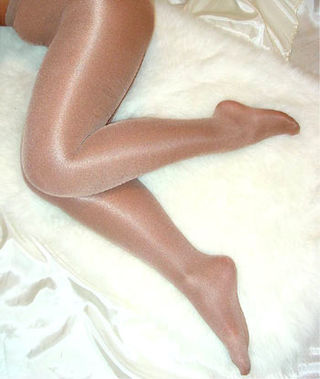
Pantyhose, sometimes also called sheer tights, are close-fitting legwear covering the wearer's body from the waist to the toes. Pantyhose first appeared on store shelves in 1959 for the advertisement of new design panties as a convenient alternative to stockings and/or control panties which, in turn, replaced girdles.

Shorts are a garment worn over the pelvic area, circling the waist and splitting to cover the upper part of the legs, sometimes extending down to the knees but not covering the entire length of the leg. They are called "shorts" because they are a shortened version of trousers, which cover the entire leg, but not the foot. Shorts are typically worn in warm weather or in an environment where comfort and airflow are more important than the protection of the legs.
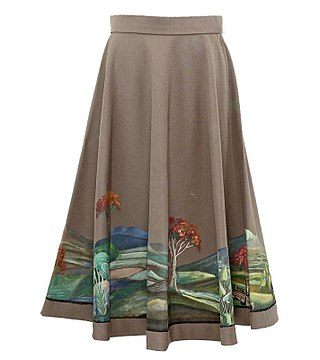
A skirt is the lower part of a dress or a separate outer garment that covers a person from the waist downwards.
Dolphin is a common name of aquatic mammals within the infraorder Cetacea.

Hooters is the registered trademark used by two American restaurant chains: Hooters, Inc., based in Clearwater, Florida, and Hooters of America, Inc. based in Atlanta, Georgia, and owned by the private investment firm Nord Bay Capital. The Hooters name is a double entendre referring to both a North American slang term for women's breasts and the logo.
A rivethead or rivet head is a person associated with the industrial dance music scene. In stark contrast to the original industrial culture, whose performers and heterogeneous audience were sometimes referred to as "industrialists", the rivethead scene is a coherent youth culture closely linked to a discernible fashion style. The scene emerged in the late 1980s on the basis of electro-industrial, EBM, and industrial rock music. The associated dress style draws on military fashion and punk aesthetics with hints of fetish wear, mainly inspired by the scene's musical protagonists.

Leggings are several types of leg attire that have varied through the years. Modern usage from the 1960s onwards has come to refer to elastic close-fitting high-rise garments worn over the legs typically by women, such as leg warmers or tights. Usage from the 18th century refers to men's wear usually made of cloth or leather that is wrapped around the leg down to the ankle. In the 19th century, leggings usually referred to infants' leg clothing that were matched with a jacket, as well as leg-wrappings made of leather or wool and worn by soldiers and trappers. Leggings prominently returned to women's fashion in the 1960s, drawing from the form-fitting clothing of dancers. With the widespread adoption of the synthetic fibre Lycra and the rise in popularity of aerobics, leggings came to further prominence in the 1970s and 1980s, and eventually made their way into streetwear. Leggings are a part of the late 2010s into the 2020s athleisure fashion trend of wearing activewear outside sporting activities and in casual settings.

Hotpants or hot pants are extremely short shorts. The term was first used by Women's Wear Daily in 1970 to describe shorts made in luxury fabrics such as velvet and satin for fashionable wear, rather than their more practical equivalents that had been worn for sports or leisure since the 1930s. Hotpants are worn above the knees around the thigh area. The term has since become a generic term for any pair of extremely short shorts. While hotpants were briefly a very popular element of mainstream fashion in the early 1970s, by the mid-1970s they had become associated with the sex industry, which contributed to their fall from fashion. However, hotpants continued to be popular as clubwear well into the 2010s and are often worn within the entertainment industry, particularly as part of cheerleader costumes or for dancers. Performers such as Britney Spears and Kylie Minogue have famously worn hotpants as part of their public performances and presentation.

A kufi or kufi cap is a brimless, short, and rounded cap worn by men in many populations in North Africa, East Africa, West Africa, South Asia, and the Middle East. It is also worn by men throughout the African diaspora. The hat has strong associations with many Islamic cultures, as well as Pan-African pride. It is commonly called a "topi" or "tupi" in the Indian subcontinent. The kufi is similar to the kippah in Jewish culture.

Fashion in the 1990s was defined by a return to minimalist fashion, in contrast to the more elaborate and flashy trends of the 1980s. One notable shift was the mainstream adoption of tattoos, body piercings aside from ear piercing and, to a much lesser extent, other forms of body modification such as branding.

Fashion of the 1980s was characterized by a rejection of 1970s fashion. Punk fashion began as a reaction against both the hippie movement of the past decades and the materialist values of the current decade. The first half of the decade was relatively tame in comparison to the second half, which was when apparel became very bright and vivid in appearance.

2000s fashion is often described as a global mash up, where trends saw the fusion of vintage styles, global and ethnic clothing, as well as the fashions of numerous music-based subcultures. Hip-hop fashion generally was the most popular among young people of all sexes, followed by the retro inspired indie look later in the decade.

Clothing fetishism or garment fetishism is a sexual fetish that revolves around a fixation upon a particular article or type of clothing, a particular fashion or uniform, or a person dressed in such a style.

Outside Western cultures, men's clothing commonly includes skirts and skirt-like garments; however, in the Americas and much of Europe, skirts are usually seen as feminine clothing and socially stigmatized for men and boys to wear, despite having done so for centuries. While there are exceptions, most notably the cassock and the kilt, these are not really considered 'skirts' in the typical sense of fashion wear; rather they are worn as cultural and vocational garments. People have variously attempted to promote the fashionable wearing of skirts by men in Western culture and to do away with this gender distinction.
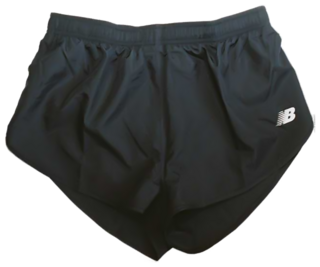
Gym shorts are an article of clothing typically worn by people when exercising. They are typically made out of fabrics that allow for maximum comfort and ease, such as nylon. Brands such as Nike, Under Armour, Gymshark, Adidas, and Reebok all make gym shorts. Cotton gym shorts were made popular by a cheerleading brand called Soffe. Gym shorts or sweatpants are required for many junior high and high school physical education courses.

Underwear, underclothing, or undergarments are items of clothing worn beneath outer clothes, usually in direct contact with the skin, although they may comprise more than a single layer. They serve to keep outer clothing from being soiled or damaged by bodily excretions, to lessen the friction of outerwear against the skin, to shape the body, and to provide concealment or support for parts of it. In cold weather, long underwear is sometimes worn to provide additional warmth. Special types of undergarments have religious significance. Some items of clothing are designed as undergarments, while others, such as T-shirts and certain types of shorts, are appropriate both as underwear and outerwear. If made of suitable material or textile, some underwear can serve as nightwear or swimwear, and some undergarments are intended for sexual attraction or visual appeal.

Low-rise is a style of clothing designed to sit low on, or below, the hips. The style can also be called lowcut, hipster, or hip-hugger. and can apply to garments worn by males or females. The term can be applied to all garments that cover the wearer's crotch area, including trousers, jeans, shorts, skirts, panties, briefs, bikinis, pantyhose, and tights.

The 2010s were defined by hipster fashion, athleisure, a revival of austerity-era period pieces and alternative fashions, swag-inspired outfits, 1980s-style neon streetwear, and unisex 1990s-style elements influenced by grunge and skater fashions. The later years of the decade witnessed the growing importance in the western world of social media influencers paid to promote fast fashion brands on Pinterest and Instagram.

A basketball uniform is a type of uniform worn by basketball players. Basketball uniforms consist of a jersey that features the number and typically the last name of the player on the back, as well as shorts and athletic shoes. Within teams, players wear uniforms representing the team colors; the home team usually wears a lighter-colored uniform, while the visiting team wears a darker-colored uniform.